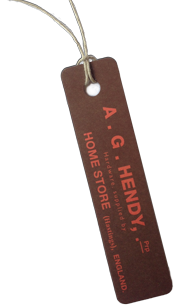The Scullery / Petworth House

The scullery is the main artery of any country house kitchen, for it provides the cogs for good things to come. Efficiency and order in a busy kitchen is critical, for it delivers a happier cook and consequently delicious things to eat. In today’s age of open-plan living we’ve recently rediscovered that we seek intimacy as well as space, and a finely tuned not-to-big section of the kitchen given over to washing-up and prep appeals to our sense of well-being, our contentment and the simple pleasure of everything-in-its-place. Smaller spaces can be more efficient too: work triangles are tighter, more honed, and the ergonomics are naturally perfected; and when one room or a divided area is given over to chores and domesticity we can breathe. We are happy.

Beyond storage and functionality, the scullery can also be a beautiful place. Take a leaf out of Petworth House’s below-stairs aesthetic, and think white tiling, robust taps, exposed pipework, ceramic drainers, butler’s sinks (two side-by-side – you can never have too many sinks), a generous plate and pot rack, and scrubbed shelving. Make sure there are plenty of hooks for sink and bottle brushes, cloths, pans, utensils. A line of brushes hanging on a white-washed or tiled wall is a beautiful thing, and appeals to our modern day aesthetic. In short, the scullery not only adds a place to deal with and be rid of all the dirties, it also frees us of cupboards and provides walk-in storage, a must in the 21st century home.

Get The Look / tap here view our below-stairs collection of country house plate racks and further similar items found at Petworth House.
The scullery at Petworth House was not just for washing-up, in fact most of its uses were for everything but the washing of dishes, as it was a multi-function room, and was presided over by the scullery man. The scullery man was a tour de force, and not to be meddled with, as he was also armed with a knife and a little fierce at times. For as well as cleaning the copper pans and keeping the boiler in working order, he also had to joint carcasses and skin rabbits, pluck chickens and prepare game for use in the kitchen.

There are further sinks for scullery duties in the main kitchen itself, which date to the late nineteenth century, along with tiled walls – tiled kitchens didn’t exist until around 1900. These very handsome vitreous white glazed ceramic sinks were mounted on floor-standing ceramic twin supports, and fed by wall mounted bib taps and pipes, and were state-of-the-art equipment at the turn of the century.


The main piece of equipment in the scullery room is a late nineteenth century steam boiler by Jeakes & Co, that was powered by coal and which supplied all heating and cooking steam for the main kitchen, along with hot water for the Victorian circular copper sink in the scullery. Above is a 60 gallon cistern by Winser & Co which was used to flush the drains.

The Victorian circular copper’s rim is fitted with a protective mahogany frame, worn and polished by centuries of toil.

The rectangular copper lined sink was once used to wash pots and pans and also vegetables brought in from the estate. Vegetables were delivered straight from the garden by boy and wheelbarrow, and once a week the head gardener would come up to the kitchens to discuss with the chef the seasonal produce that was available.

Get The Look / tap here to view our below-stairs scullery collection of storage jars and further similar items found at Petworth House.





